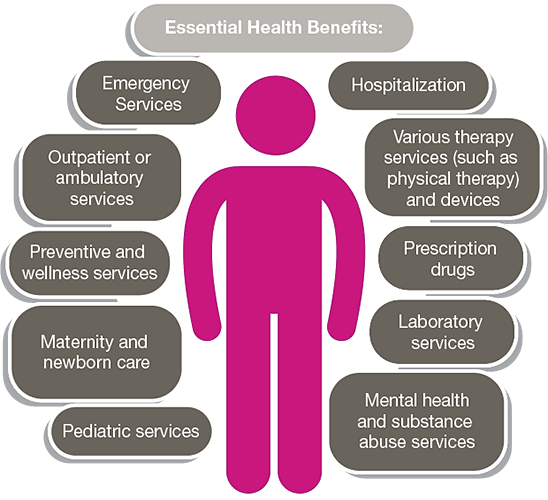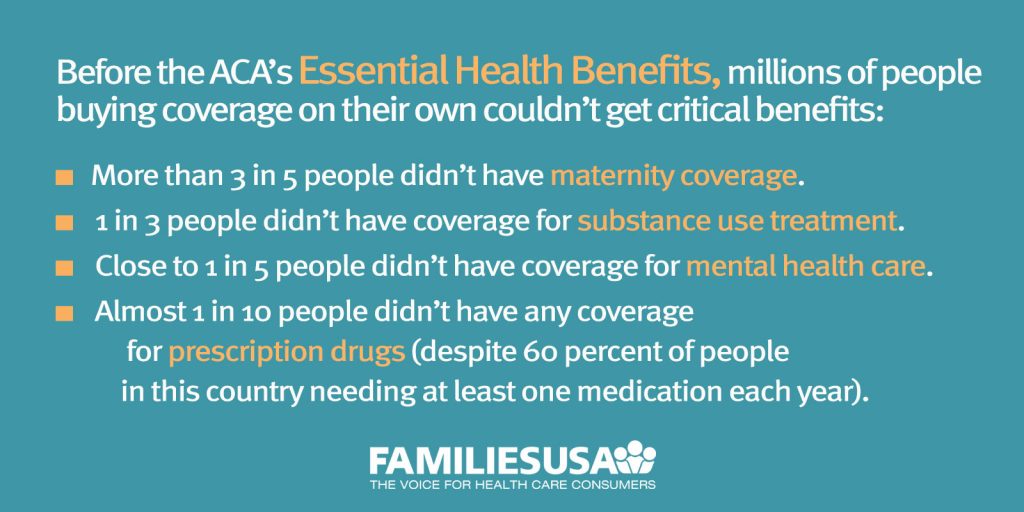Medicare Advantage Agent Things To Know Before You Buy
Medicare Advantage Agent Things To Know Before You Buy
Blog Article
The 7-Minute Rule for Medicare Advantage Agent
Table of ContentsSome Of Medicare Advantage AgentWhat Does Medicare Advantage Agent Do?About Medicare Advantage Agent

adheres to from confusing the fairly young age account of the without insurance with the much better health and wellness, usually, of more youthful individuals. This obscures the link between wellness status and medical insurance. For those without accessibility to office health and wellness insurance, poor health is a prospective barrier to purchasing nongroup coverage since such coverage might be highly priced, omit pre-existing problems, or be merely inaccessible. The number of uninsured Americans is not especially huge and has actually not altered in the last few years. Seven out of ten participants in a nationally representative study thought that fewer Americans did not have medical insurance than really do(Fronstin, 1998). Roughly fifty percent(47 percent )believed that the variety of people without health insurance lowered or remained constant over the latter fifty percent of the last decade(Blendon et al., 1999). This decrease of virtually 2 million in the number of individuals 'without insurance policy (a decrease
of about 4 percent)is certainly a positive change. With a softer economic climate in 2000 the most up to date reported gains in insurance policy coverage might not continue(Fronstin, 2001 ). The decline in the number of without insurance will not proceed if the economic climate stays sluggish and health treatment prices remain to outmatch inflation. This is due to the fact that the information were gathered for a period of strong economic efficiency. Of the estimated 42 million individuals who were uninsured, all but concerning 420,000(concerning 1 percent)were under 65 years old, the age at which most Americans come to be eligible for Medicare; 32 million were grownups in between ages 18 and 65, around 19 percent of all grownups in this age; and 10 million were kids under 18 years of age, about 13.9 percent of all children (Mills, 2000). These estimates of the variety of persons without insurance are produced from the yearly March Supplement to the Present Populace Survey (CPS), performed by the Census Bureau. Unless or else noted, nationwide price quotes of individuals without wellness insurance policy and proportions of the populace with different type of insurance coverage are based on the CPS, one of the most extensively made use of resource of quotes of insurance protection and uninsurance prices. These studies and the quotes they generate are defined briefly in Table B. 1 in Appendix B - Medicare Advantage Agent. These studies vary in size and sampling approaches, the questions that are inquired about insurance coverage
Getting My Medicare Advantage Agent To Work
coverage, and the moment period over which insurance policy protection or uninsurance is gauged(Lewis et al., 1998, Fronstin, 2000a ). Still, the CPS is specifically useful because it creates yearly estimates relatively promptly, reporting the previous year's insurance protection approximates each September, and because it is the basis for a consistent collection of estimates for more than 20 years, permitting analysis of trends in insurance coverage with time.

Medicare Advantage Agent - Questions
Over a three-year period starting early in 1993, 72 million individuals, 29 percent of the U.S. populace, were without coverage for at the very least one month. Within a single year(1994), 53 million people experienced at the very least a month without protection(Bennefield, 1998a). 6 out of every ten without insurance adults are themselves employed. Functioning does improve the likelihood that one and one's household members will certainly have insurance policy, it is not a guarantee. Even participants of families with 2 permanent breadwinner have almost a one-in-ten possibility of being uninsured (9.1 percent without insurance price)(Hoffman and Pohl, 2000 ). The partnership between medical insurance and access to care is well established, as recorded later on in this phase. Although the partnership between medical insurance and health end results is neither straight nor easy, a considerable clinical and health and wellness solutions research literature web links health insurance policy protection
to better accessibility to care, much better quality, and improved personal and populace wellness standing. For instance, the 2nd record, on personal health outcomes for uninsured grownups, is stood for by the inner circle of the number, while the 3rd record, on household well-being, includes the subjects of the 2nd record however emphasizes a various device of analysis, particularly, the household. The 6th record in the series will certainly provide information concerning methods and efforts taken on in your area, statewide, or country wide to attend to the absence of insurance and its damaging impacts. Degrees of evaluation for analyzing the impacts of uninsurance. This discussion of medical insurance protection concentrates mostly on the U.S. population under age 65 due to the fact that virtually all Americans 65 and older have Medicare or other public insurance coverage.
Additionally, it focuses especially on those without any health and wellness insurance for any size of time. The issues encountered by the underinsured remain in some respects comparable to those encountered by the without insurance, although they are typically much less extreme. Uninsurance and underinsurance, nonetheless, involve distinctly various plan issues, and the strategies for resolving them may vary. Throughout this study and the five reports to adhere to, the primary emphasis gets on individuals without any health and wellness insurance coverage and thus no help in paying for healthcare past what is offered via charity and safeguard establishments. Wellness insurance is an effective element influencing receipt of care because both patients and physicians react to the out-of-pocket price of services. Health and wellness insurance policy, however, is neither necessary nor enough to obtain access to clinical solutions. The independent and direct result of health and wellness
insurance insurance policy on access to health wellness is well establishedDeveloped Others will certainly get the healthcare they need even without medical insurance, Bonuses by spending for it out of pocket or seeking it from carriers that supply care cost-free or at highly subsidized rates. For still others, medical insurance alone does not make sure receipt of care due to other nonfinancial barriers, such as a lack of healthcare providers in their community, minimal access to transportation, illiteracy, or linguistic and click here to find out more social distinctions. Formal research study about uninsured populations in the USA dates to the late 1920s and early 1930s when the Committee on the Price of Healthcare produced a series of records regarding funding physician office gos to and hospitalizations. This problem became significant as the numbers of medically indigent climbed throughout the Great Anxiety. Empirical researches regularly support the link in between accessibility to care and improved health results(Bindman et al., 1995; Starfield, 1995 ). Having a routine source of care can be considered a forecaster of access, instead than a straight measure of it, when health end results are themselves utilized as access indications. This extension of the notion of access measurement was made by the IOM Board on Monitoring Accessibility to Personal Health And Wellness Care Solutions(Millman, 1993, p. Whether moms and dads are insured appears to impact whether their youngsters get care in addition to just how much careeven if the children themselves have insurance coverage(Hanson, 1998). The health of parents can influence their ability to look after their kids and the level of household anxiety. Fretting about their kids's accessibility to care is itself a source of tension for moms and dads. Three chapters comply with in this record. Chapter 2 offers an introduction of how employment-based medical insurance, public programs and individual insurance plans run and communicate to offer comprehensive yet incomplete protection of the U.S. populace. This consists of a testimonial of historical trends and public policies influencing both public and personal insurance policy, a discussion of the interactions amongst the various kinds of insurance, and an evaluation of why people move from one program to another or finish up
Report this page